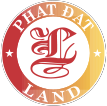CORN
CBOT Corn
CONTRACT SPECIFICATION
| Trading Screen Product Name | CBOT Corn | ||||
| Commodity Code | ZCE | ||||
| Contract Size | 5 000 bushels/lot | ||||
| Price Quotation | cent / bushel | ||||
| Trading Hours | Monday-Friday Session 1: 08:00 A.M - 08:45 P.M Session 2: 09:30 P.M - 02:20 A.M (the next day) |
||||
| Minimum Price Fluctuation | 0.25 cent / bushel | ||||
| Contract Series | March, May, July, September, and December | ||||
| Delivery Registration Day | The fifth business day prior to the First Notice Day | ||||
| First Notice Day | The last business day of the month prior to the contract month. | ||||
| Last Trading Day | The business day prior to the 15th calendar day of the contract month. | ||||
| Margin | As MXV required | ||||
| Position Limit | As MXV required | ||||
| Price Limit |
|
||||
| Settlement Method | Deliverable | ||||
| Quality Standards | No. 1, No. 2, No. 3 Corn |
QUALITY STANDARDS
In accordance with the regulations of Corn traded on Chicago Board of Trade (CBOT).
Product infomation
The first corn futures contract began trading at CBOT in 1877 and it is the most traded agricultural futures contract in the world.
Currently, corn futures contract is the most liquid type of contract in the agricultural futures market traded in Vietnam.
Currently, corn futures contract is the most liquid type of contract in the agricultural futures market traded in Vietnam.
Corn value chain in the world
Planting place
Maize is a grain grown in many parts of the world. Maize is mainly grown in temperate and tropical regions, in conditions ranging from below sea level to 12,000 feet above sea level, from the arid plains of Russia or North Africa to the tropics. of Florida.
Corn is grown in countries that receive at least 8 inches of rain such as Morocco or areas with more than 200 inches of rainfall, such as parts of India. The growing season for maize ranges from very short time frames, from 3 months in Quebec to 9 months in tropical areas like Colombia.
Maize is grown in most states of the United States but production and harvesting is concentrated in the Midwestern United States, known as the corn belt. (The corn belt is an area located in the Midwest of the United States that provides corn production for the entire United States.)
Corn is grown in countries that receive at least 8 inches of rain such as Morocco or areas with more than 200 inches of rainfall, such as parts of India. The growing season for maize ranges from very short time frames, from 3 months in Quebec to 9 months in tropical areas like Colombia.
Maize is grown in most states of the United States but production and harvesting is concentrated in the Midwestern United States, known as the corn belt. (The corn belt is an area located in the Midwest of the United States that provides corn production for the entire United States.)
Harvest
Depending on the natural characteristics of each region, the planting and harvesting time of maize will be different. Most corn in the world is grown in spring or early summer (from around February to May depending on the location) and harvested in the fall and winter (maybe from August to November).

Figure 1: Corn planting and harvesting times in some regions of the world
After being harvested from the farms, the corn is transported by truck to the depots in each area, where it is then transported to the places of use. Corn is also exported from one country to another.
Processing
There are many types of corn on the market today, but three common types on the market are: rock corn, concave corn and sweet corn. Corn has many uses in everyday life. Maize is a staple food for humans and a major ingredient in animal feed. Because of its high fructose content, corn is also used as a sweetener to produce corn syrup and corn oil. Besides, corn is also used to produce ethanol.
Ethanol is considered a low-cost liquid transport fuel. Dry mills in the United States produce more than 50% of the world's ethanol and export it to 50 other countries. About one-third of the by-products generated during ethanol production go to animal feed, often in the form of distillate grains, corn gluten feed, and cornmeal.
Ethanol is considered a low-cost liquid transport fuel. Dry mills in the United States produce more than 50% of the world's ethanol and export it to 50 other countries. About one-third of the by-products generated during ethanol production go to animal feed, often in the form of distillate grains, corn gluten feed, and cornmeal.
The situation of corn import and export in the world
According to statistics from USDA at the beginning of 2019, Argentina, Brazil, Ukraine and the United States are the largest corn exporters in the world, accounting for 90% of global maize export. Argentina is the largest corn exporter in the world. The annual corn production is high, while the domestic consumption of corn is low, Argentina exports more than half of the corn harvested.
Countries in South Asia and Southeast Asia are the largest importers of maize in the world, mainly for domestic consumption. In Southeast Asia, Vietnam and Malaysia are the two leading countries in terms of imported maize, which is mainly used for livestock. While in South Asia, Bangladesh is the leading importer of maize, which is used mainly as feed for aquatic animals.
China is the largest corn growing country in the world, however, the harvested corn output is for domestic demand.
(The situation of corn exports in the world refer to Figure 2)

Figure 2: The situation of corn exports in the world
Through the analysis, it can be seen that maize is the most widely grown cereal in the agricultural market. Therefore, in the agricultural derivatives market, corn futures are also the most traded. Understanding the value chain of corn and how maize production is distributed across regions of the world will help producers and investors to trade corn futures more efficiently.
Countries in South Asia and Southeast Asia are the largest importers of maize in the world, mainly for domestic consumption. In Southeast Asia, Vietnam and Malaysia are the two leading countries in terms of imported maize, which is mainly used for livestock. While in South Asia, Bangladesh is the leading importer of maize, which is used mainly as feed for aquatic animals.
China is the largest corn growing country in the world, however, the harvested corn output is for domestic demand.
(The situation of corn exports in the world refer to Figure 2)

Figure 2: The situation of corn exports in the world
Through the analysis, it can be seen that maize is the most widely grown cereal in the agricultural market. Therefore, in the agricultural derivatives market, corn futures are also the most traded. Understanding the value chain of corn and how maize production is distributed across regions of the world will help producers and investors to trade corn futures more efficiently.
Factors affecting corn
* Supply and Demand: The price of corn is determined by the supply and demand for corn in the market. If the supply of corn is higher than the demand for corn, the price of corn tends to decrease. On the contrary, if the demand for corn is high while the supply of corn is limited, the price of corn will tend to increase.
* Weather: One of the main factors affecting the supply of corn in the market is the weather. Dry weather, too little rainfall will reduce corn yield, which means the supply of corn in the market will decrease. Heavy rains and floods will also reduce the yield of harvested corn, thereby reducing the supply of corn in the market.
*Consumption demand: Consumption of corn is affected by a number of factors such as demographic changes, economic growth or changes in diet and consumption. As the global population increases, especially in developing countries, it will significantly increase the demand for meat, fish and poultry, which in turn will increase the demand for maize in the market because maize is the main food. main food for livestock.
* Ethanol price: The price of corn begins to increase significantly when corn is used to produce ethanol, Ethanol is a biofuel for efficient combustion, a by-product from the production of high-protein, high-protein ethanol creates source of nutritious food for livestock. As a result, the demand for corn almost doubled. Studies show that ethanol has 20% to 30% less carbon footprint than gasoline. About 40% of the corn produced in the United States is consumed for ethanol production, which has a clear impact on the price of corn
* USD price: Usually, the USD price will have an influence on the price of goods, including the price of corn. Through historical data, the price of corn fluctuates inversely with the value of the dollar. Corn prices tend to decrease when the value of USD increases and vice versa. Corn is a globally traded grain. According to USDA statistics in 2018, the United States is the largest exporter of corn in the world. When the USD falls, importing countries tend to buy more corn, which leads to an increase in corn prices.
* Weather: One of the main factors affecting the supply of corn in the market is the weather. Dry weather, too little rainfall will reduce corn yield, which means the supply of corn in the market will decrease. Heavy rains and floods will also reduce the yield of harvested corn, thereby reducing the supply of corn in the market.
*Consumption demand: Consumption of corn is affected by a number of factors such as demographic changes, economic growth or changes in diet and consumption. As the global population increases, especially in developing countries, it will significantly increase the demand for meat, fish and poultry, which in turn will increase the demand for maize in the market because maize is the main food. main food for livestock.
* Ethanol price: The price of corn begins to increase significantly when corn is used to produce ethanol, Ethanol is a biofuel for efficient combustion, a by-product from the production of high-protein, high-protein ethanol creates source of nutritious food for livestock. As a result, the demand for corn almost doubled. Studies show that ethanol has 20% to 30% less carbon footprint than gasoline. About 40% of the corn produced in the United States is consumed for ethanol production, which has a clear impact on the price of corn
* USD price: Usually, the USD price will have an influence on the price of goods, including the price of corn. Through historical data, the price of corn fluctuates inversely with the value of the dollar. Corn prices tend to decrease when the value of USD increases and vice versa. Corn is a globally traded grain. According to USDA statistics in 2018, the United States is the largest exporter of corn in the world. When the USD falls, importing countries tend to buy more corn, which leads to an increase in corn prices.











